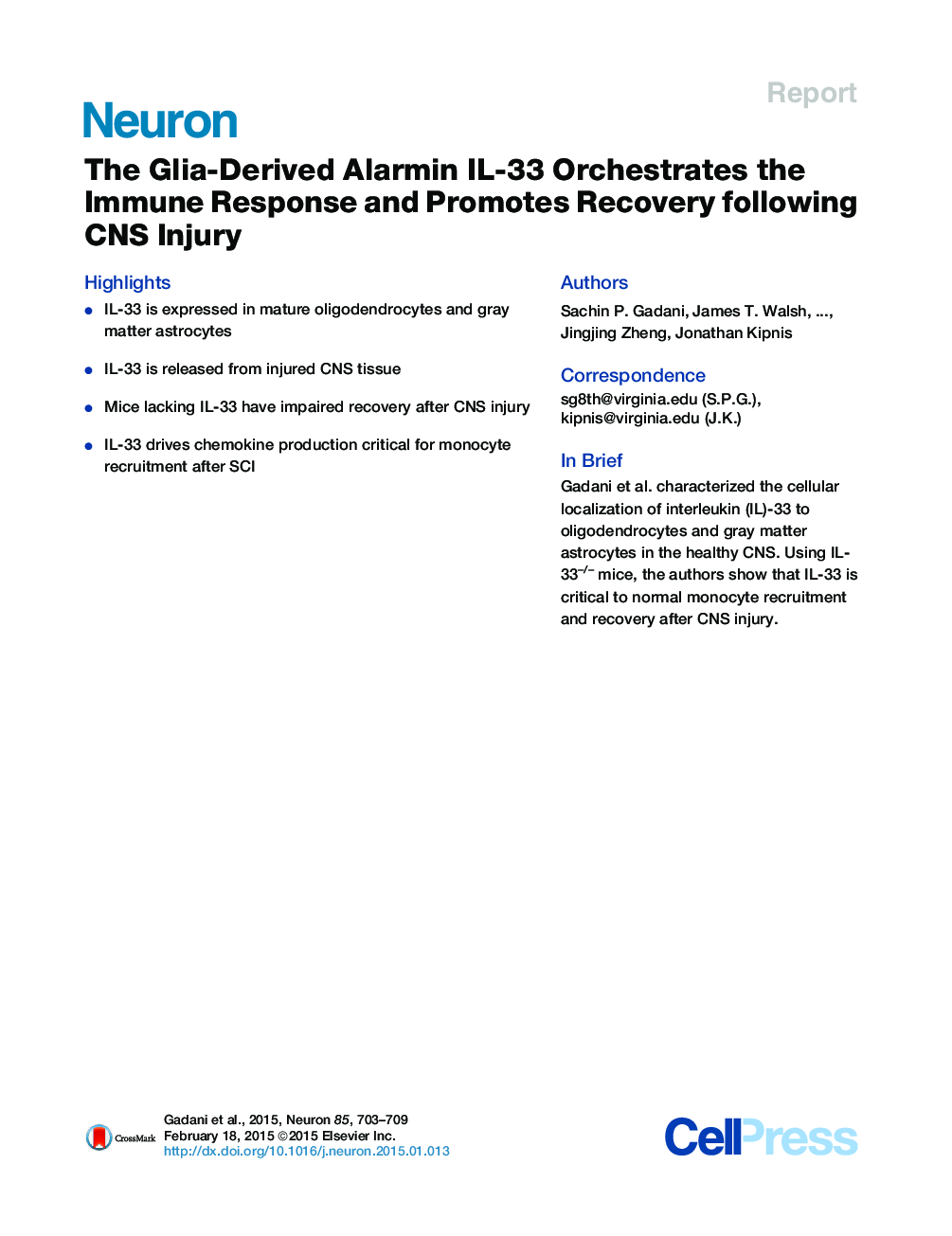| Article ID | Journal | Published Year | Pages | File Type |
|---|---|---|---|---|
| 4320885 | Neuron | 2015 | 7 Pages |
•IL-33 is expressed in mature oligodendrocytes and gray matter astrocytes•IL-33 is released from injured CNS tissue•Mice lacking IL-33 have impaired recovery after CNS injury•IL-33 drives chemokine production critical for monocyte recruitment after SCI
SummaryInflammation is a prominent feature of CNS injury that heavily influences neuronal survival, yet the signals that initiate and control it remain poorly understood. Here we identify the nuclear alarmin, interleukin (IL)-33, as an important regulator of the innate immune response after CNS injury. IL-33 is expressed widely throughout the healthy brain and is concentrated in white mater due to predominant expression in post-mitotic oligodendrocytes. IL-33 is released immediately after CNS injury from damaged oligodendrocytes, acting on local astrocytes and microglia to induce chemokines critical for monocyte recruitment. Mice lacking IL-33 have impaired recovery after CNS injury, which is associated with reduced myeloid cell infiltrates and decreased induction of M2 genes at the injury site. These results demonstrate a novel molecular mediator contributing to immune cell recruitment to the injured CNS and may lead to new therapeutic insights in CNS injury and neurodegenerative diseases.
